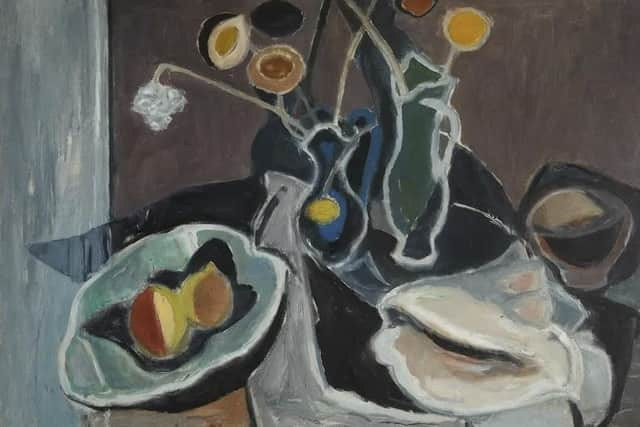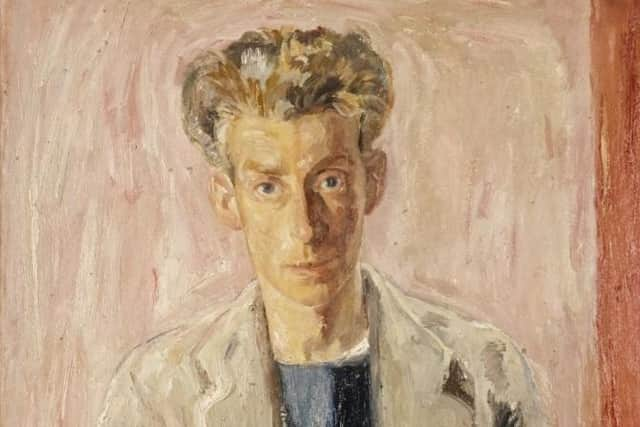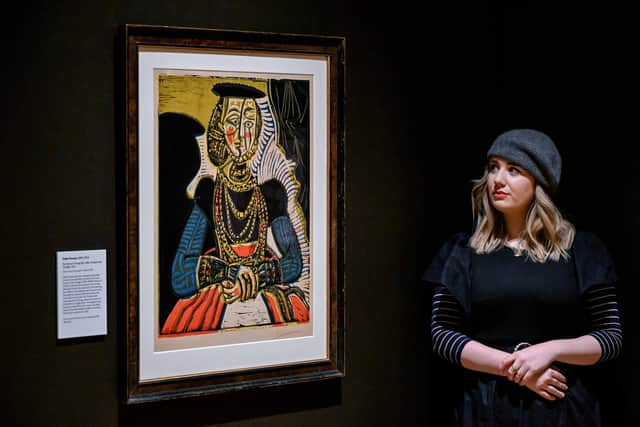Art reviews: William Gillies – Modernism and Nation | The Printmaker's Art – Rembrandt to Rego
William Gillies: Modernism and Nation, Royal Scottish Academy, Edinburgh ****
The Printmaker’s Art: Rembrandt to Rego, Royal Scottish Academy, Edinburgh ****
Advertisement
Hide AdWilliam Gillies was a central figure in Scottish art. He had a long career teaching at Edinburgh College of Art, ending it, reluctantly, as principal, and his intense dedication to his art was a particular inspiration to those he taught. He was a bit of an enigma, however, but a brilliant new book by Andrew McPherson, William Gillies: Modernism and Nation in British Art, resolves the enigma to reveal a radical and unfamiliar Gillies who has been hiding in plain sight.


Gillies himself did little to dispel the enigma, even cultivated it, and that allowed others to promote a simplistic account of him as a gifted lad who liked to paint his native countryside. Landscapes done on the spot are certainly his most familiar work. They were easy, no doubt, and they sold well. The book’s publication is marked by an exhibition at the Royal Scottish Academy, William Gillies: Modernism and Nation, but there are none of these in the show which is largely drawn from the RSA’s collection. Instead he appears in it as an original and experimental modernist. There are, for instance near-abstract works from early in his career that clearly reflect the art he saw as a student in Paris after finishing at Edinburgh College of Art. The conventional view is that this period only touched his art superficially, but McPherson argues that, on the contrary, it affected him profoundly.
Trees on the Tyne from 1924, for instance, is a vivid piece of cubist painting and clearly he was not just copying painters like Robert Delaunay – he was thinking it through and making it his own. Untitled, from c.1935, is a composition of geometrical shapes with no recognisable references at all. Rocks and Water, Morar c.1932-4 is equally abstract, though somehow also recognisably landscape. The appearance of work by Paul Klee and Edvard Munch in Edinburgh in the thirties is usually seen as a watershed for Gillies, but these early abstract and semi-abstract works demonstrate that he was already engaging with what McPherson’s describes as one of “modernism’s core concerns, the instability and sources of meaning itself.” Nor was this just a learning phase. Throughout his life Gilies continued to paint near-abstract pictures like Rocks and Sea from c.1935, Hill Pool from 1960, or the remarkable Nairn Beach from 1970. In the latter picture a beach-ball, a kite and a lighthouse float in a vaporous world of blue above a line of yellow sand.
At the heart of McPherson’s argument is the idea that Gillies was haunted by the dark shadows of his experience in the trenches and by tragedy within the family. His father abused his sisters, but the family also carried a genetic thyroid disease. It killed his sister Emma after she had postponed her own ambitions as a potter to run the family shop and help keep Gillies while a student. He must have suffered guilt for her sacrifice, but also have lived in fear that the disease would come for him too.
Given this perspective, McPherson puts great emphasis on the family portraits that he painted. They include striking portraits of his two sisters, but a key picture is the large and enigmatic Interior from 1938. Compositionally it is a triptych, with two flat verticals creating three distinct fields. Gillies, with easel and palette, is squeezed into the narrow central space. His mother is in an armchair to the right. Facing out of the picture, she seems detached. His elder sister Janet is in the right-hand panel. Emma, the younger sister, had died in 1936. Janet however is shown as many years younger than she actually was in 1938. Hinting at the erotic, she is wearing only a slip and is combing her long, blonde hair. What Gillies represents is his own world in all is emotional complexity, but it is also deliberately disjointed. Temporal and spatial continuities are disrupted in a way that McPherson suggests reflects his understanding of “a cardinal element of modernist critique.” You cannot give any account of experience by only painting what you see. Life’s complexity demands much more and Gillies understood that very well.


There is a lot of still-life in this picture and, further upsetting the conventional view of Gillies as the landscape painter for whom still-life was only an aside, McPherson uses statistics to demonstrate that, numerically, still-life was central to his art. He also argues that the objects he paints are often freighted with symbolic meaning. A black vase, for instance, that appears in a strange picture here along with a mask of Mephistopheles, appears frequently elsewhere and seems to have had some ominous significance. Emma Gillies’s pots also seem to be a constant in these compositions, too, not because they happened to be handy, but to invoke her presence. Her illness was undiagnosed until too late and tragically she died in a mental institution, but she remained with Gillies and – through her pots – she is a constant presence in his art.
Advertisement
Hide AdMcPherson’s reassessment of Gillies is wholly convincing and a larger, more academic edition of the book, due next August, will expand the argument further. Meanwhile, although the exhibition does support what he says, what it cannot do, except through displays of documents, catalogues and photographs, is provide the wider context within which Gillies developed his ideas. McPherson’s account of the people who encouraged him, and especially his links to the avant-garde circle of the remarkable couple of Canon John Gray and Marc-André Raffalovich, is a particularly interesting part of his book. A gay couple, they were escapees – Gray escaped into the catholic church – from Oscar Wilde’s circle (Gray is even thought to have been the model for Wilde’s Dorian Grey). They brought scintillating company to their salon in Morningisde. Even though Gillies’s connection was only tangential, it was nevertheless a very different background to the one usually given, of the boy from rural Haddington with a talent for art.
Gillies was not a printmaker, but in the same building downstairs the National Gallery is presenting The Printmakers’ Art, a wide survey drawn from the national print collections. It is divided into sections by technique. The first is a relief printing and opens with Dürer’s spectacular woodcut of the Four Horsemen of the Apocalypse. It is hard to beat but nevertheless has serious competition nearby in Hokusai’s Mount Fuji, Blake’s woodcut illustrations to Virgil and a wonderful linocut by Picasso.
Advertisement
Hide AdThe next section is intaglio printing, which includes etching and engraving. Dürer is a star here, too, with his exquisite engraving of St Jerome. Kathe Kollowitz’s etching Woman with her Head bowed is another masterpiece. Even so, two states of Rembrandt’s great etching of Christ Presented to the People can scarcely be matched. Ian Fleming’s engraving, Gethsemane, does keep the Scottish flag flying here, but otherwise the Scots are only thinly represented in this section. We are promised a show of Scottish etching in the spring, but it seems a shame that great printmakers like DY Cameron and Muirhead Bone are not represented here too.


A section on lithography, screen-printing and monotypes includes Toulouse Lautrec, Miró and Blake. The final section covers the modern medium of screen-printing, but also stencilling. It includes work by Toulouse-Lautrec, Lichtenstein, Bridget Riley and others. I did feel the absence of Eduardo Paolozzi here, however. He is represented elsewhere by a small photogravure, but really, as the pioneer of screen-printing as an artistic medium, he is an absent giant.
William Gillies until 28 January; The Printmaker’s until 25 February
William Gillies: Modernism and Nation in British Art, by Andrew McPherson, is published by Edinburgh University Press, price £25